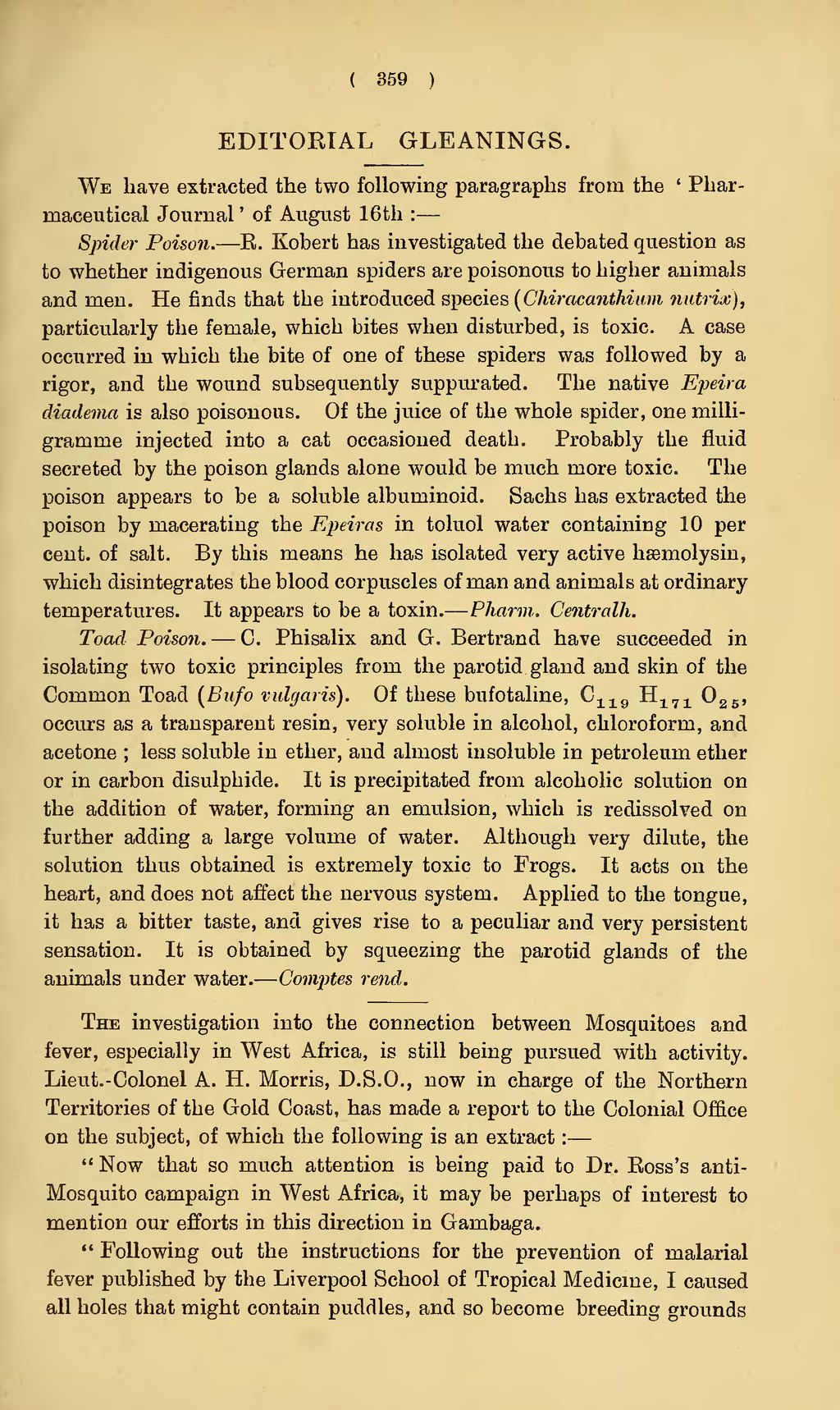EDITORIAL GLEANINGS.
We have extracted the two following paragraphs from the 'Pharmaceutical Journal' of August 16th:—
Spider Poison.—R. Kobert has investigated the debated question as to whether indigenous German spiders are poisonous to higher animals and men. He finds that the introduced species (Chiracanthium nutrix), particularly the female, which bites when disturbed, is toxic. A case occurred in which the bite of one of these spiders was followed by a rigor, and the wound subsequently suppurated. The native Epeira diadema is also poisonous. Of the juice of the whole spider, one milligramme injected into a cat occasioned death. Probably the fluid secreted by the poison glands alone would be much more toxic. The poison appears to be a soluble albuminoid. Sachs has extracted the poison by macerating the Epeiras in toluol water containing 10 per cent, of salt. By this means he has isolated very active hæmolysin, which disintegrates the blood corpuscles of man and animals at ordinary temperatures. It appears to be a toxin.—Pharm. Centralh.
Toad Poison.—C. Phisalix and G. Bertrand have succeeded in isolating two toxic principles from the parotid gland and skin of the Common Toad (Bufo vulgaris). Of these bufotaline, C119H171O25, occurs as a transparent resin, very soluble in alcohol, chloroform, and acetone; less soluble in ether, and almost insoluble in petroleum ether or in carbon disulphide. It is precipitated from alcoholic solution on the addition of water, forming an emulsion, which is redissolved on further adding a large volume of water. Although very dilute, the solution thus obtained is extremely toxic to Frogs. It acts on the heart, and does not affect the nervous system. Applied to the tongue, it has a bitter taste, and gives rise to a peculiar and very persistent sensation. It is obtained by squeezing the parotid glands of the animals under water.—Comptes rend.
The investigation into the connection between Mosquitoes and fever, especially in West Africa, is still being pursued with activity. Lieut.-Colonel A.H. Morris, D.S.O., now in charge of the Northern Territories of the Gold Coast, has made a report to the Colonial Office on the subject, of which the following is an extract:—
"Now that so much attention is being paid to Dr. Ross's anti-Mosquito campaign in West Africa, it may be perhaps of interest to mention our efforts in this direction in Gambaga.
"Following out the instructions for the prevention of malarial fever published by the Liverpool School of Tropical Medicine, I caused all holes that might contain puddles, and so become breeding grounds
